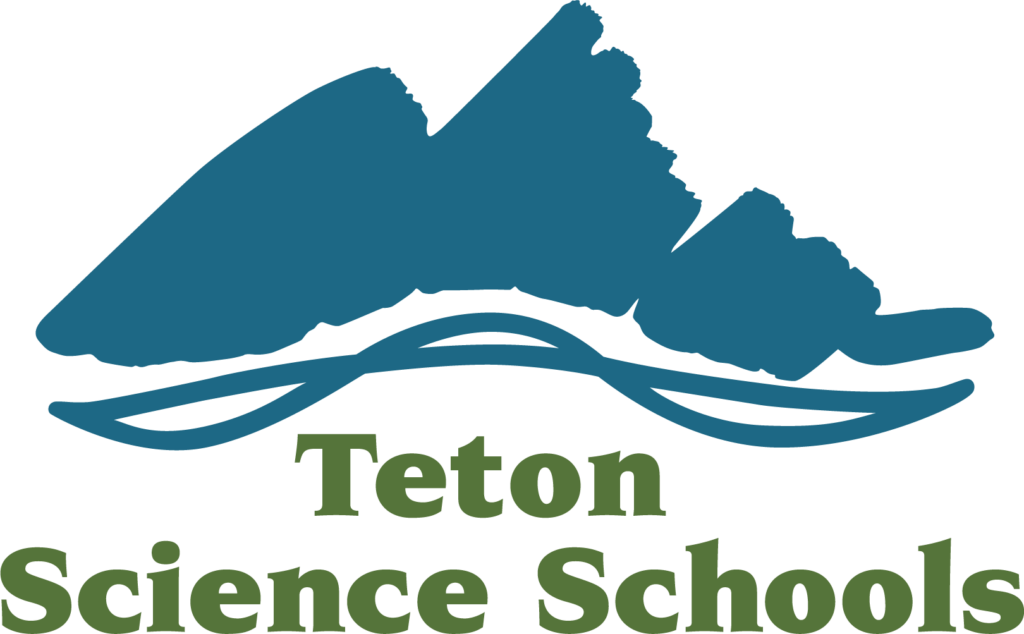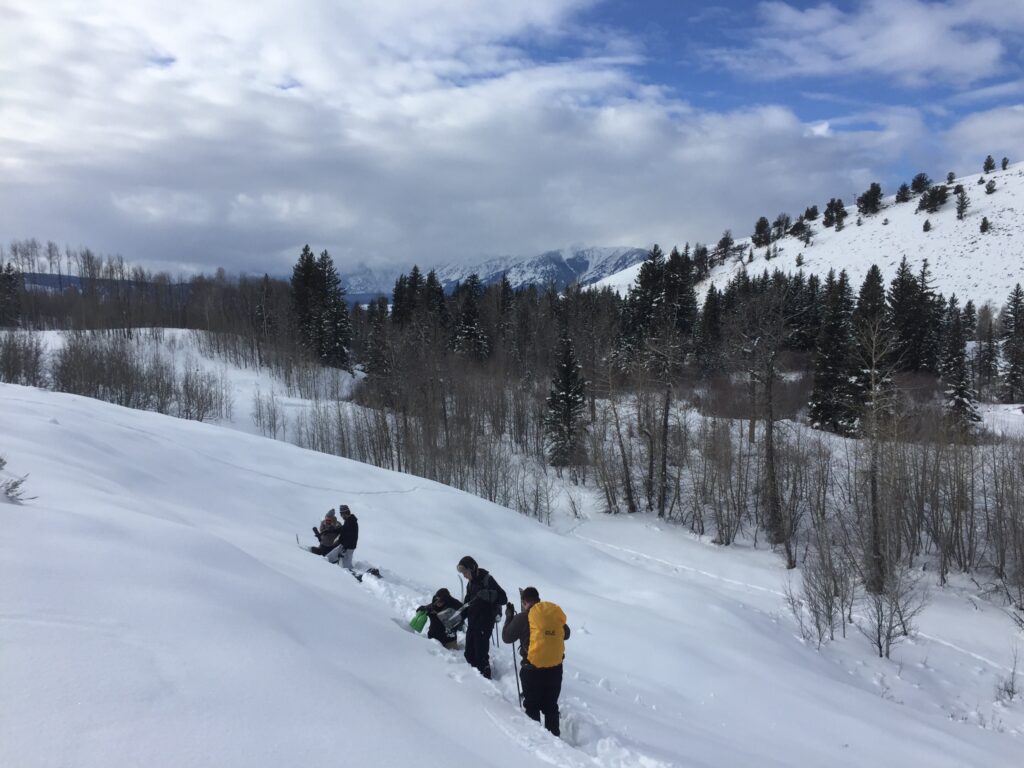
As Frank Craighead writes in his book A Naturalist’s Guide to Grand Teton and Yellowstone National Parks, “The shortest day of the year (December 21) has come and gone with the severest winter weather still ahead, but the shortest, dark days are behind.” As students from the University of Wyoming arrived on the Kelly Campus of Teton Science Schools for an intensive, three credit winter ecology course, they were met by knee-deep snow banks, a cow moose and her young, and the chill of the January air. Over the next ten days, the winter landscape would become their home and place of exploration.
 The first third of the course was filled with what it means to be a naturalist and how to survive winter. Though several students said that they had always found the winter landscape to feel abandoned and dead, they quickly realized that the opposite is true. As they unveiled the story of Grand Teton in the winter, they found ravens defending nesting territory; seven bald eagles perched in a cottonwood tree overlooking a bison gut pile; moose, fox, coyote, squirrel, and mouse tracks revealing the complexity of life occurring each day and night in the sage, conifer, aspen, and riparian communities; five wolves from the Pinnacle pack napping near Lobo Hill; and even a grizzly bear taking advantage of the bison hunt near the Gros Ventre Junction. As one student wrote, “it is truly amazing what you can see when you take the time to look.”
The first third of the course was filled with what it means to be a naturalist and how to survive winter. Though several students said that they had always found the winter landscape to feel abandoned and dead, they quickly realized that the opposite is true. As they unveiled the story of Grand Teton in the winter, they found ravens defending nesting territory; seven bald eagles perched in a cottonwood tree overlooking a bison gut pile; moose, fox, coyote, squirrel, and mouse tracks revealing the complexity of life occurring each day and night in the sage, conifer, aspen, and riparian communities; five wolves from the Pinnacle pack napping near Lobo Hill; and even a grizzly bear taking advantage of the bison hunt near the Gros Ventre Junction. As one student wrote, “it is truly amazing what you can see when you take the time to look.”

The second third of the course found the UW students digging snow pits, assessing the snowpack and learning its complexity and dynamics. Students were excited to learn how to distinguish layers, take temperature, find snow density, and identify snow crystals. In the final third of the course, we looked at plant and animal winter adaptations, and the students conducted hands-on, independent research projects on topics ranging from how human extremities deal with the cold, to the effects of ungulate browsing on the riparian community, to the sinuosity of predator tracks versus prey tracks.
We hope these ten days immersed in winter inspire the UW students to continue to ask questions and always “take the time to look” at the world around them.


